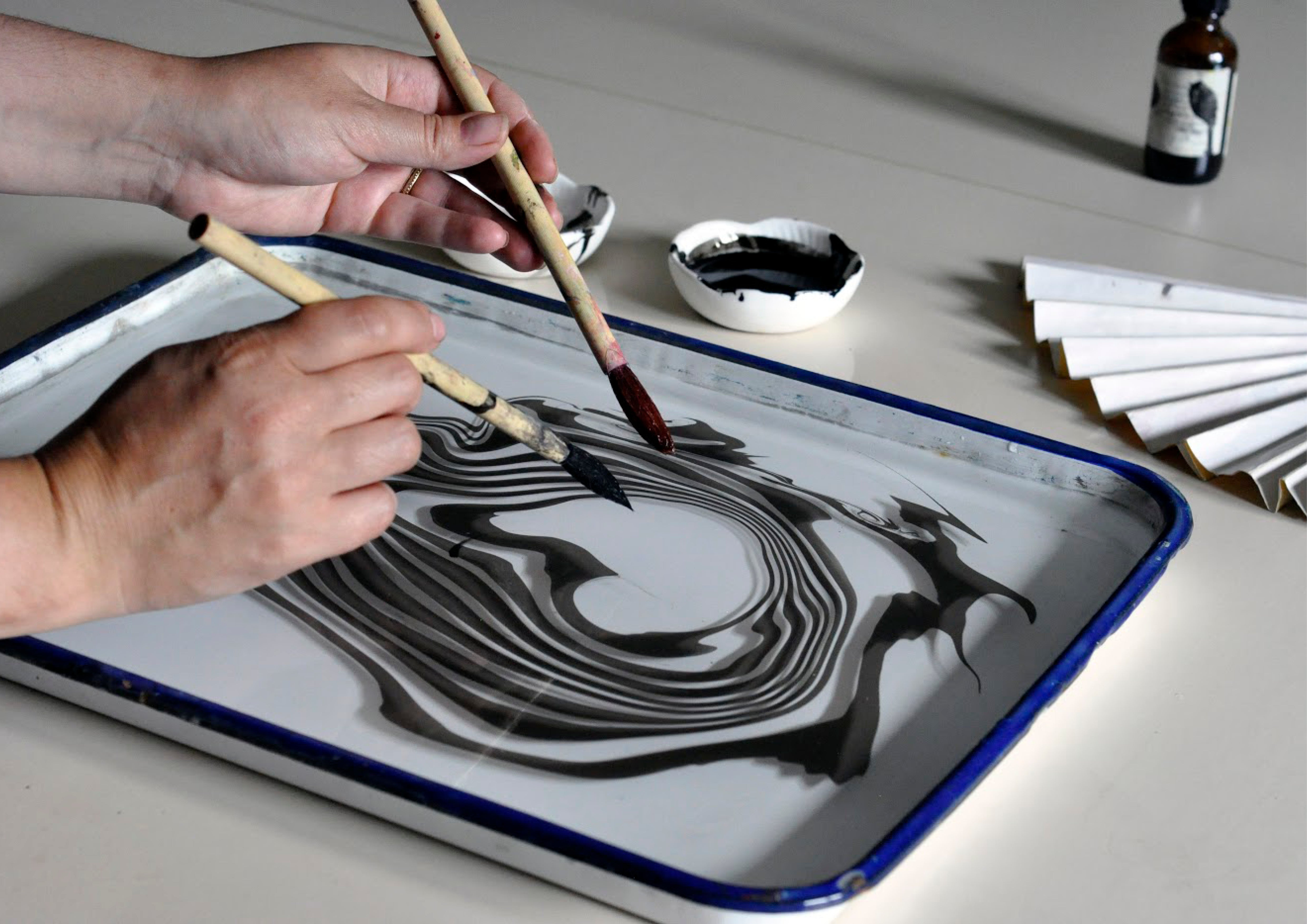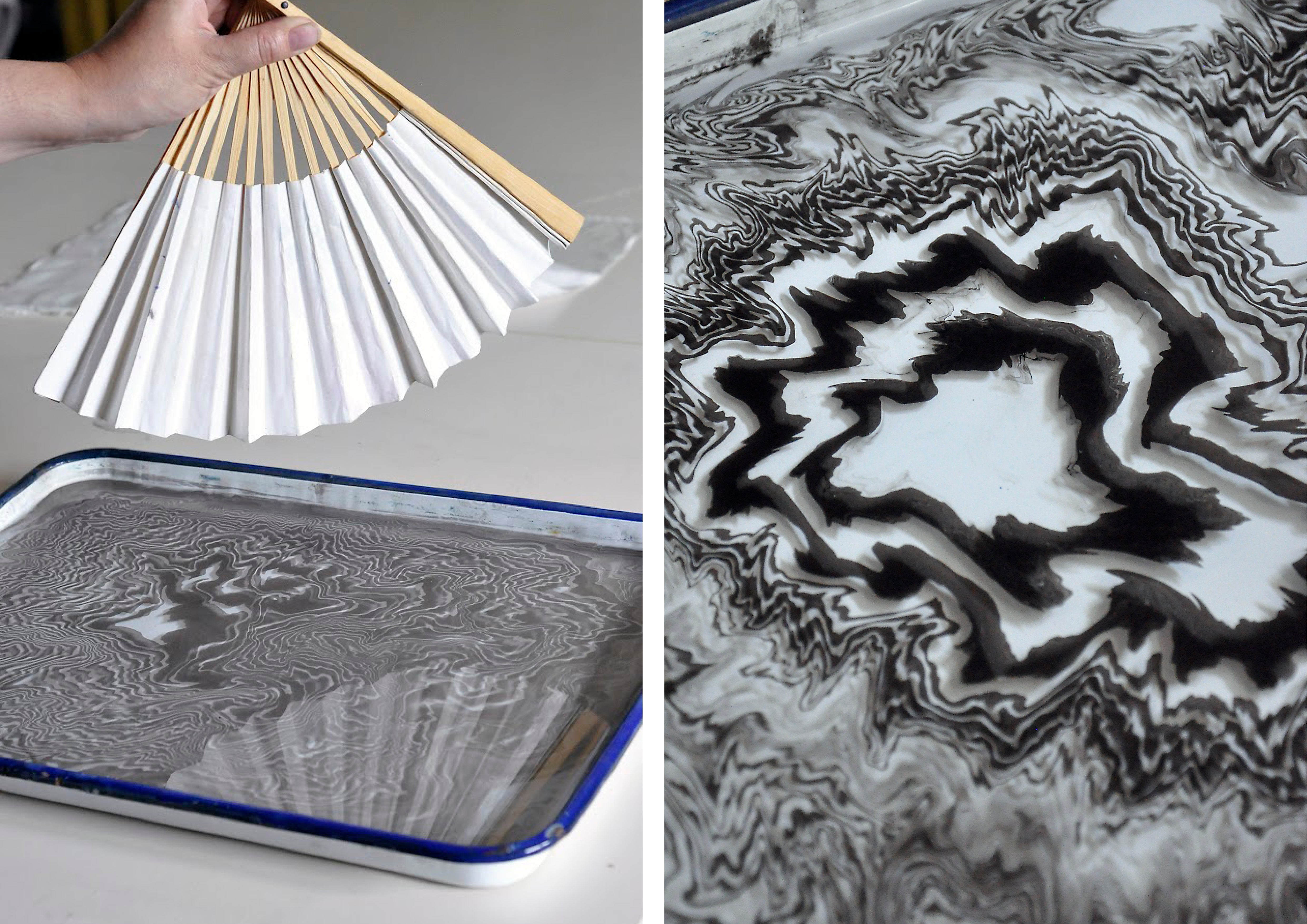
Suminagashi is the Japanese art of marbling, dating back to the 12th Century. Translating directly to 'floating ink', the marbling process uses a richly pigmented sumi ink floating on water, which is then manipulated into distinctive patterns.
Textile artist Natalie Stopka talks through the traditional process and meaning behind Suminagashi, with some simple methods of manipulating ink...
Suminagashi, like its forbearers sumi painting and calligraphy, relies on the four treasures': the ink stick, ink stone, a calligraphy brush, and paper. The term comes from the Japanese words sumi' for ink and nagashi,' meaning floating, and uses a richly pigment sumi ink made from burnt pine boughs. It can be purchased pre-made in a bottle, or for the deepest black as a dried compressed ink stick.
Colored inks may also be used in Suminagashi; traditionally just vermillion and indigo. These can be purchased in bottles or as Chinese ink chips from calligraphy suppliers. Today, it's possible to marble with almost any color ink you please, always mixed with surfactant to make the inks float.

In the Japanese Suminagashi tradition, the marbler strives to allow the ink to express itself. Rather than impose a premeditated design, suminagashi is a collaboration between the artist and the natural world. Designs are created in concert by the materials and fluid forces, with the artist acting as conductor. Given the many variables at work in the fluid medium of marbling, the ink sometimes presents surprising new characteristics. By encouraging these phenomena, new avenues of exploration will open. If the developing design suggests physical manipulation, here are three techniques for moving the ink on the water in your tray...
1. This first is quite simple: swish your hand through the water in the tray before applying the ink. The motion of the water will slowly move the design as it develops, illustrating the eddies beneath the surface.
2. Pluck a single hair from your head. Instead of using a stylus to draw through the design, a hair is very fine and is a flexible tool that cannot be entirely controlled. This will create a delicate and sinuous line, the nature of which will be influenced by the length and texture of your hair.
3. Lastly, you can use a fan or stiff sheet of paper to buffet the surface of the water with a gust of air. This will energize the design with intense movement. These three techniques may be used singly or in concert to expand the possibilities of composition and style.
Observation and experimentation are the keys to developing beautiful and expressive Suminagashi!

Natalie Stopka is New York-based book and textile artist specialising in marbled and naturally dyed goods.
Each season we bring together like-minded, creative individuals through a series of events, talks and workshops both online and in our shops. We hope you can take part.
Add a comment